
Homo Sapiens, a.k.a human beings, are only one among many other species in the primate family. Members of this family also include creatures like tamarins, tarsiers, and lemurs (made popular by the animated movie Madagascar, and also the only place they can be found), which bear strong resemblances to rodent and sloth-like creatures. Don’t be fooled by their appearance, though, because these creatures love hanging from branches by their hands, feet, and tail. Even the instantly recognizable monkeys found both in the wild and in captivity come in a wide variety of shapes, sizes, and colors, with different embellishments that make them unique. See if you recognize these 20 incredible creatures!
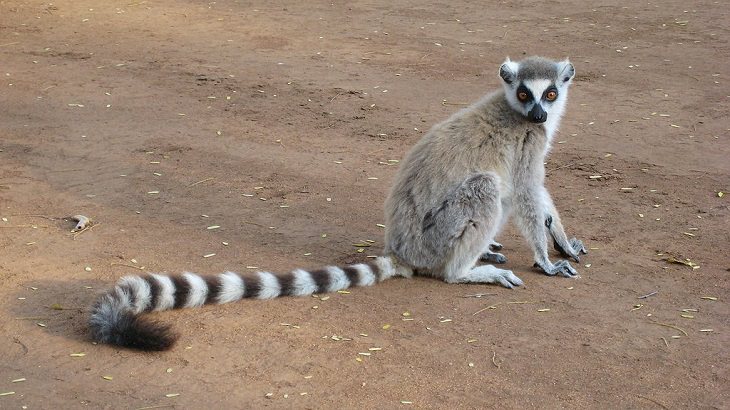
(By Alex Dunkel (Maky), Wikimedia Commons)
This creature is likely to look familiar to you, as it is the symbol for Madagascar National Parks and a popular animal in contemporary TV and documentary culture. Like all lemurs, it is found only in Madagascar and can be identified by the black and white stripes on its tail and thick fur. They are one of the most vocal species of primate. This species has been listed as endangered since 2014 and currently only 2000 of this species are left in the wild.
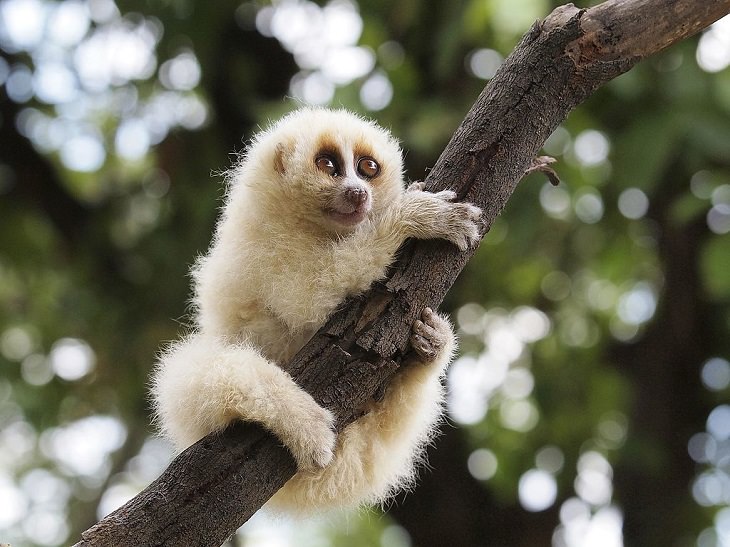
(By Aprisonsan, Wikimedia Commons)
This furry white creature is native to the western and central portions of the Indonesian island Java. It can be identified by a prominent diamond-shaped pattern across the forehead and between the eyes. They usually reside in mangrove forests and enjoy climbing bamboo trees. Populations of this species have drastically declined due to its popularity in the exotic pet trade, as well as the traditional medicine industry, causing this primate to be listed as critically endangered.
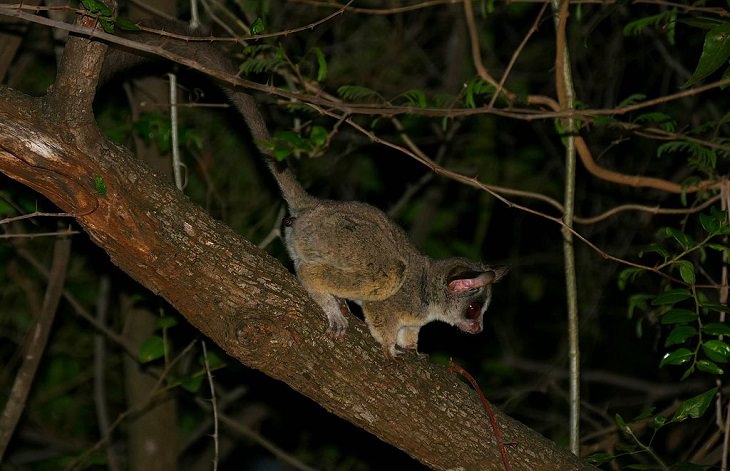
(By Bernard DUPONT, Wikimedia Commons)
Despite its extremely cat-like appearance, this species actually belongs to the group of primates called galagos, also known as bushbabies. It has darkened diamond-shaped rings around its eyes. These bushbabies are spread across various states in central and southern Africa. This primate feeds almost exclusively on a gum secreted by the Acacia tree.
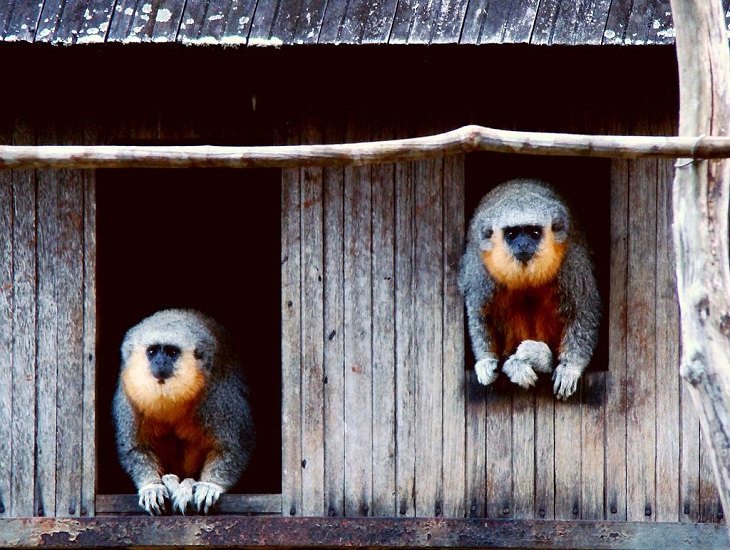
(By Ana_Cotta, Wikimedia Commons)
Titi monkeys are a subspecies of New World primate (those found in Central and South America) known for their long, soft fur and non-prehensile tails. This particular species of titi monkey has a round head, and, as its name suggests, a bright-red belly. They are native only to Brazil and can move extremely fast. Unlike most other mammals, the male of this species is usually charged with the care of infants, except when nursing.
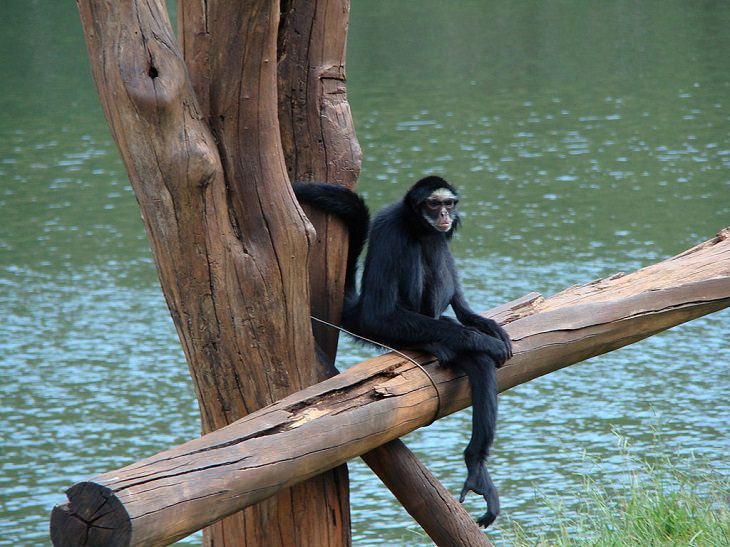
(By Minister2009, Wikimedia Commons)
Spider monkeys, like this particular species, resemble the typical monkey and can be identified by their long limbs and non-prehensile tail. The white-cheeked spider monkey, named for the white hue of its face, is found exclusively in the Amazon forest of Brazil. Their diet consists mostly of fruits, flowers, bark and honey, and they play a major role in the dispersal of seeds across the forest. Due to soybean production and urbanization, their habitat is being destroyed. They are currently listed as an endangered species.
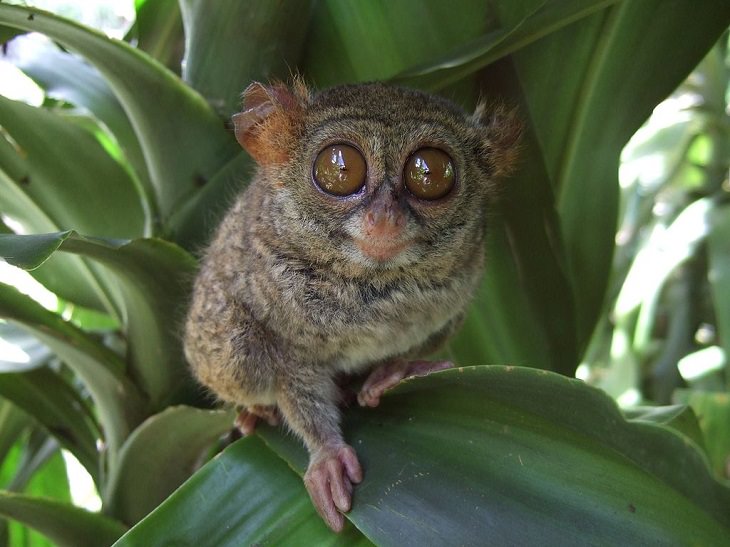
(By Sakurai Midori, Wikimedia Commons)
This wide-eyed primate is part of the tarsier family of monkeys, which are predominantly found in the islands of Southeast Asia. All tarsiers have a unique cranial structure that helps balance their heavy head and large eyes. This is an adapted feature that enables them to wait silently for their prey, which consists of snakes, insects, birds, and lizards. The spectral tarsier is found near Sulawesi, also known as Celebes. They are considered a vulnerable species.

(By Ipaat, Wikimedia Commons)
Uakaris are another member of the New World Primate family, known for their short tails (not to be used for hanging) and elongated bodies. In the case of the Bald Uakari, there is fur present all over the animal's body except for their head. Their faces are a bright red hue. This peculiar monkey is native only to wooded forests like varzea (floodplain) forests in parts of the Amazon forest located in Brazil and Peru.
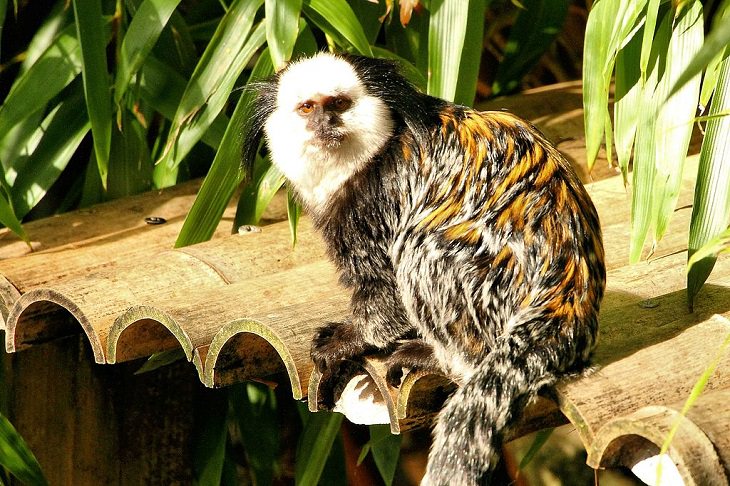
(By Airwolfhound, Wikimedia Commons)
Marmosets, in general, look very much like a cross between a monkey and a raccoon, or maybe a sloth, but they are very much a species of primate. The white-headed marmoset is one of 22 species of marmoset that differs from most other primates, as they have claws instead of nails, no wisdom teeth and tactile hairs on their wrists. This marmoset, recognizable by its white head and soft colorful fur, also goes by the names 'tufted-ear marmoset' or 'Geoffrey's marmoset', and is solely found in Eastern Brazil.

(By Miguelrangeljr, Wikimedia Commons)
This is another species of titi monkey, also endemic to Brazil. It is easily recognized by the dark orange sideburns it bears, as well as an auburn chest and reddish-brown back. It was officially identified and described by two Dutch primatologists who named the species after Prince Bernard of the Netherlands. These monkeys can be spotted near the Amazon River that runs through Brazil.
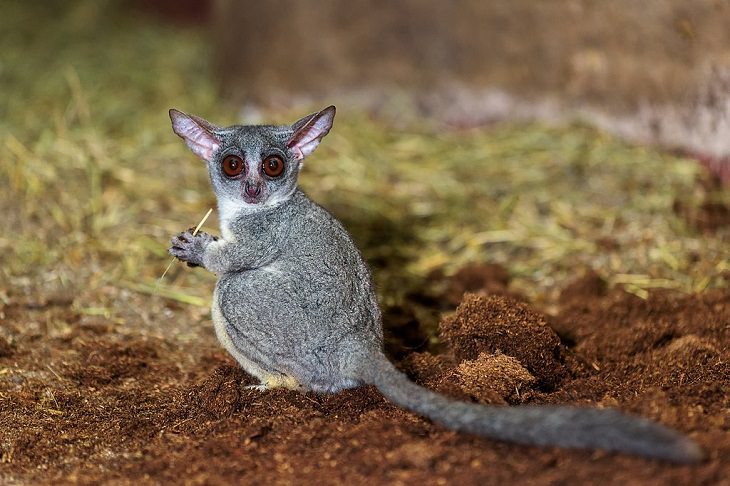
(By Petr Hamerník, Wikimedia Commons)
One among many other species of Galago primates, also known as bushbabies, the Senegal bushbaby is known for its speed and agility, being able to both run very fast and leap to high distances. Their big eyes help them see better at night, and they have strong hind limbs and a long tail that helps them balance when hiding on branches. They are omnivorous, eating everything from fruits and flowers to birds and their eggs.
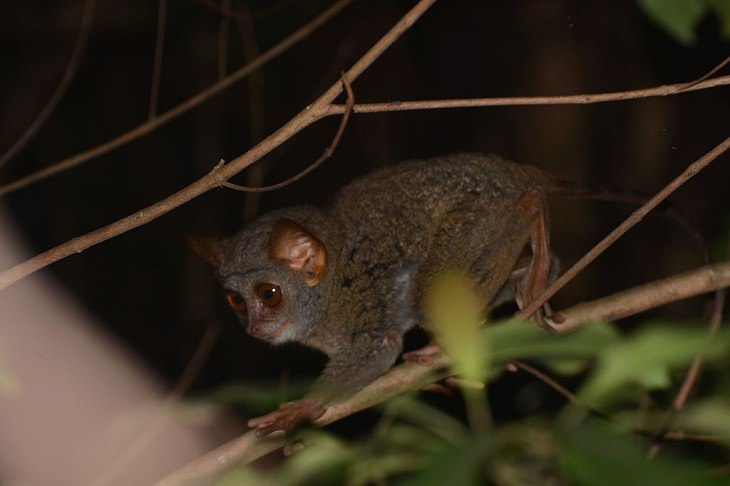
(By Ariefrahman, Wikimedia Commons)
Like the Spectral Tarsier, this tiny primate is endemic only to the nation of Sulawesi (Celebes), Indonesia, more specifically, Northern Sulawesi, which is home to the tiny volcanic island of Siau. Out of three volcanic islands in the north of Sulawesi, only Siau has a population of tarsiers living on it. The Siau island tarsier is a critically endangered species and on the list of the World’s 25 most endangered primates.
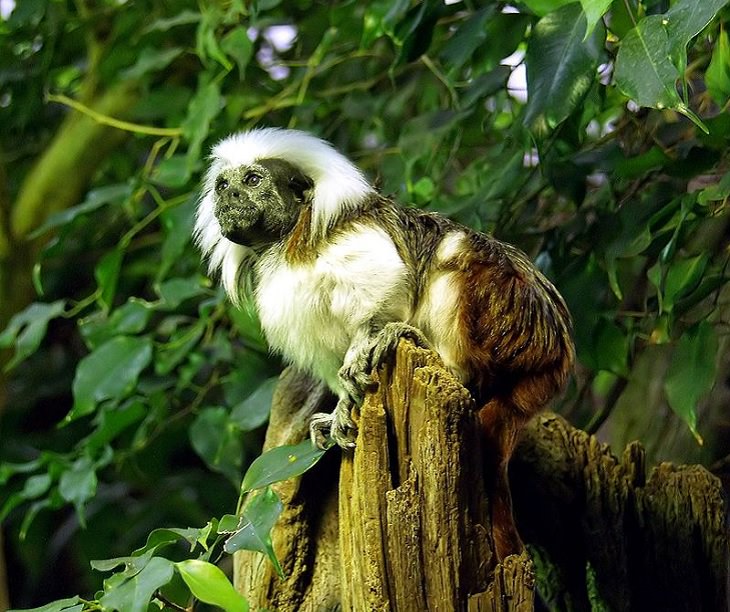
(By © Raimond Spekking, Wikimedia Commons)
This species of tamarin, a New World family of primates that are approximately the size of squirrels, is among the smallest species of primates in the world. They inhabit tropical forests in certain parts of Colombia and can be easily identified by the white tufts of fur exuding from their head and chest, hence the name “cotton-top”. Much like spider monkeys, they play a major role in natural seed dispersal across the forests, as they feed on plant fluids.
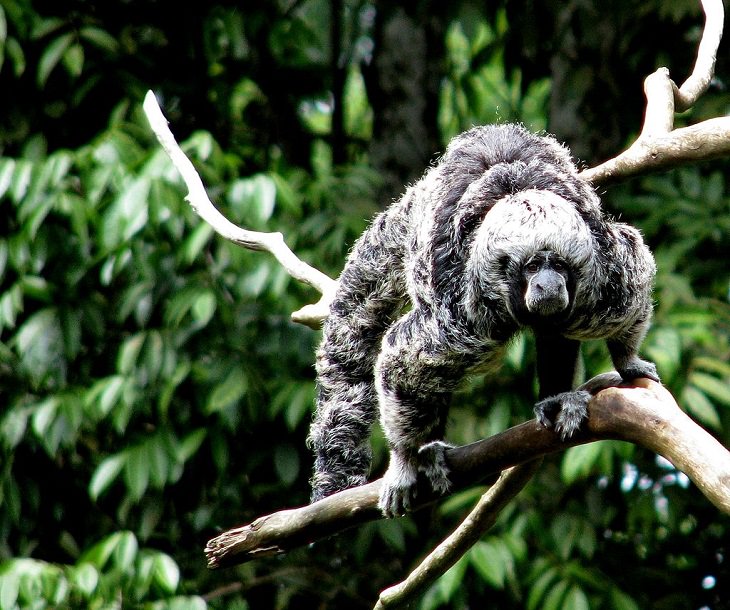
(By Ana_Cotta, Wikimedia Commons)
Saki monkeys, in general, are relatively small compared to Orangutans and Chimpanzees but are larger than the average tamarin or tarsier. Their bodies are equipped for life in the trees, with strong hind legs that let them leap with ease from tree to tree. The Rio Tapajós saki, which also goes by the name Gray's bald-faced saki is found only in certain parts of Peru, Brazil, and Bolivia.
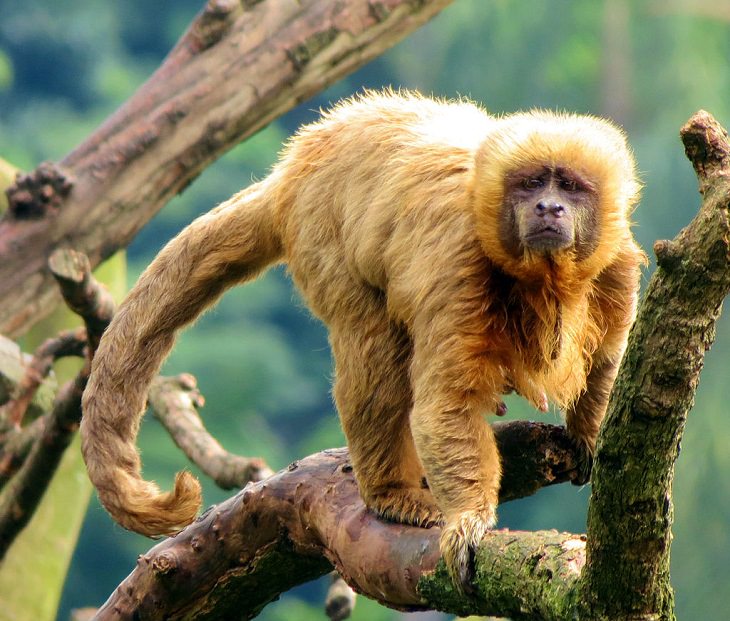
(By Miguelrangeljr, Wikimedia Commons)
Capuchin monkeys are extremely intelligent and easily trained, making appearances in television sitcoms like FRIENDS and movies like The Hangover. They are usually small in stature with long limbs that help them climb. The Blond Capuchin, which is found exclusively in Northeastern Brazil, is a critically endangered species. Only 180 living specimens of this particular Capuchin monkey remain.
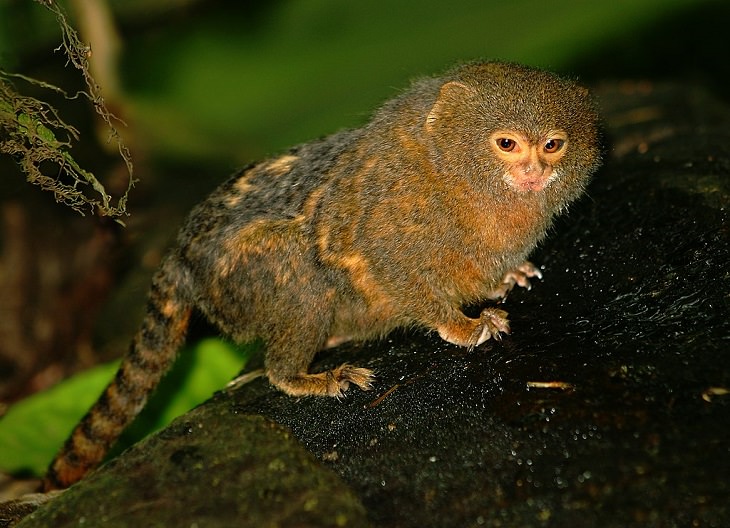
(By Malene Thyssen, Wikimedia Commons)
This species of marmoset, found only in the rainforests adjacent to the western side of the Amazon Basin, is one of the smallest primates in the world, weighing less than 3.5 ounces fully grown. It can be identified by the multicolored fur on its back and its claw-like nails that help it cling to trees and branches. It feeds almost exclusively on gums secreted by the trees of the forest. Due to habitat loss and high demand for the animal in the pet trade, its numbers have drastically declined and it is currently listed as a vulnerable species.